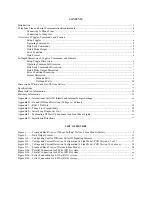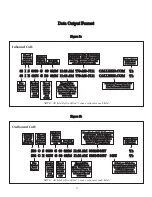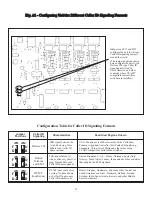
INTRODUCTION
The Whozz Calling? Deluxe units capture all details of inbound and outbound calls and send this information to a
computer via RS232 serial port or Ethernet link depending on the model purchased. If Ethernet, also refer to the
Ethernet Link Supplement
.
Deluxe units can be set to deliver only inbound Caller ID, ignoring all outbound dialed numbers. Or, both inbound
and outbound data can be sent for complete call accounting applications. Data records are sent just as the call
begins, just after the call ends, or both at the beginning and the end of the call depending upon the unit’s
configuration. Deluxe units are also capable of sending real-time, detailed events occurring on each telephone line
such as Ring, Off Hook, and On Hook.
Models equipped with relays are capable of blocking select incoming calls, based on the Caller ID number, from
passing through to the output jacks. This feature can be accomplished by dynamic control from the application
software or by pre-loading blocked phone numbers into the unit's memory. First ring suppression to the output jack
also can be performed with relay-equipped models. Selecting this option prevents office employees from answering
the telephone too quickly and thus preventing the Caller ID signal from being delivered.
The Whozz Calling? Deluxe unit uses setup toggles to determine how the unit will operate. The toggles are either
upper or lower case letters and are stored in non-volatile memory. For information on unit toggles, please refer to
page 4. Operating commands are used to list the setup parameters, see the phone number list used for call blocking,
and to reset the system. The Send Data commands are used to set line numbers, set the internal clock, and enter
phone numbers for call blocking.
The manual gives a brief discussion of the setup toggles, commands, and data formats. An in-depth discussion is
provided for all setup toggles, commands, and data formats, along with a discussion of Private and Out-Of-Area
Caller ID types.
TELEPHONE LINE AND SERIAL COMMUNICATION REQUIREMENTS
The Whozz Calling? POS is designed to collect call data from standard analog central office telephone lines. It will
not work properly when connected to extensions (or station) lines coming from a telephone switch. Connect the
unit only to analog phone lines or phone lines that have been converted to analog signaling (i.e. Cable box
converters, analog terminal adaptors, etc.).
If your unit connects to a computer through a serial port, the serial port must be functioning correctly and no other
software application can be accessing this same port. This unit will work with any serial port or COM number
setting that your software supports. If you do not have an available serial port on your computer, a USB-to-serial
adaptor cable can be used. These can be found at any computer store or most office supply outlets. The USB-to-
serial adaptor cable must be verified as, “correctly installed and operational” within the Windows device Manager
If you unit connects via Ethernet cable, plug it into any switch or router on your Local Area Network. Use the
Ethernet Configuration Tool located at
www.CallerID.com/downloads/diagnostic-tools/
to set the unit to a static IP
address within your IP scheme and outside any DHCP range. Refer to the Ethernet Supplement for more details.





































